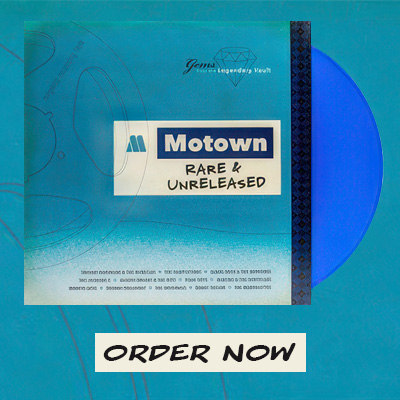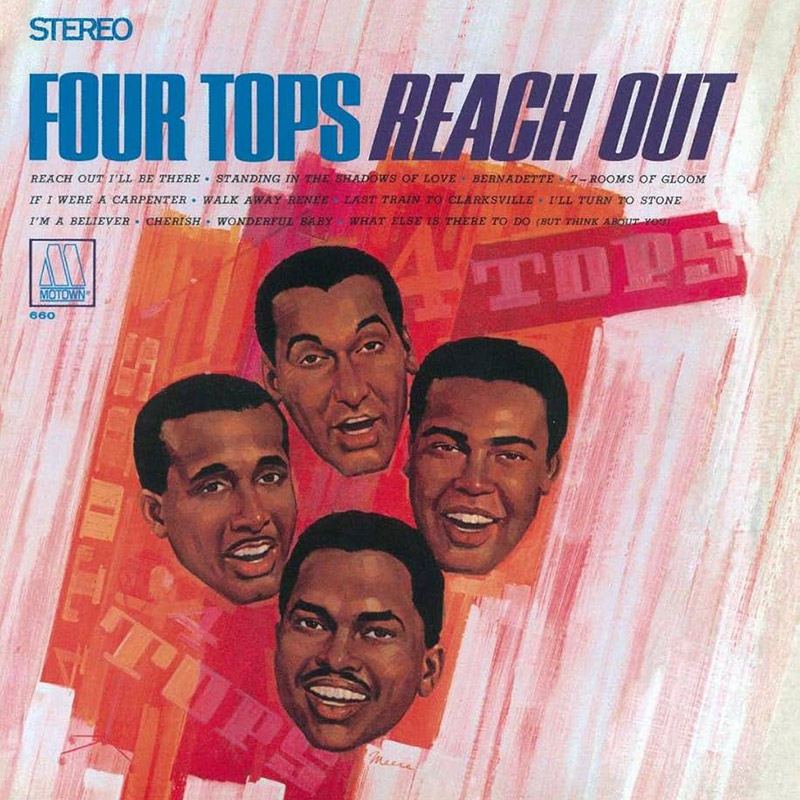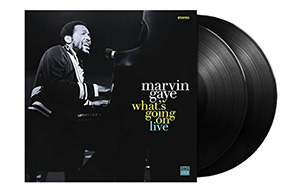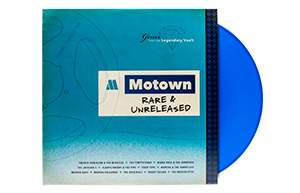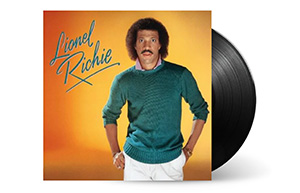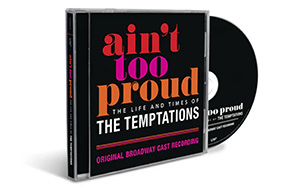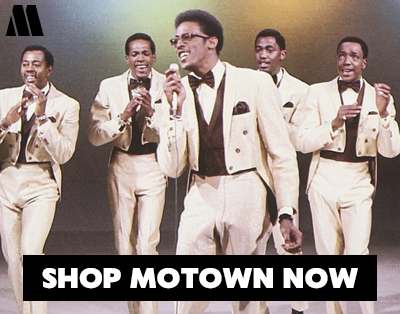Four Tops: Reach Out
Five reasons to listen:
- The apex of the Four Tops’ soul-stirring partnership with Holland/Dozier/Holland.
- Features the group’s great H/D/H trilogy (Top 10 hits, all) of “Reach Out I’ll Be There,” “Standing In The Shadows Of Love” and “Bernadette.”
- Contains three further Top 20 singles, “7-Rooms Of Gloom,” “Walk Away Renee,” “If I Were A Carpenter.”
- Resident on the Billboard album charts for more than a year.
- Songs remade by the likes of Gloria Gaynor, Michael Bolton, Barry White, Rod Stewart, the Average White Band, Human Nature, Blondie and Narada Michael Walden.
Four fast facts:
- Original release date: July 1967
- The group’s fifth studio release, and fifth Top 3 album on R&B charts
- U.S. pop chart peak, No. 11; U.K. pop chart peak, No. 4.
- Cover art by pulp fiction illustrator James Meese.
Full track listing:
In detail:
The Four Tops were Levi Stubbs Jr., Renaldo “Obie” Benson, Lawrence Payton and Abdul “Duke” Fakir, who stayed together for 43 years. They began singing as a group in 1954, going on to record – without success – for the Chess, Riverside and Columbia labels. The quartet joined Motown in early April of 1963, and began working with producers Mickey Stevenson and Hank Cosby that same month. But it was the writing/producing team of Holland/Dozier/Holland who created their first hit, in 1964: “Baby I Need Your Loving.”
“The Four Tops made recording fun,” said Lamont Dozier. “They did their job and enjoyed it. Although we might have been in the studio working 14, 16, 18 hours at, who knows, three or four o’clock in the morning, it was joyful. And the jokes, whatever they would come up with, and eating barbecue and drinking cold beer. Everything we ever did with them was a party.”
“I can remember working with Levi,” recalled Eddie Holland. “I can’t remember the song, but there was a note that was a little high, and he kept trying to reach for it. After four or five or six passes, I heard – he doesn’t even realize I did this – some girls outside the studio. I knew that Levi had that big ego, though he never expressed it. So I opened the studio door and said, ‘Come in here for a minute.’ So [the girls] stepped in, and I told the engineer, ‘OK, now go.’ Levi was right on point! Boom.”
In the summer of ’66, the Four Tops made their signature smash, “Reach Out I’ll There,” with Holland/Dozier/Holland. Hearing the song for the first time, Lawrence Payton thought it was strange. After adding their vocals, Duke Fakir later told writer Stu Hackel, “I hope they don’t release THAT.” When Berry Gordy informed the Tops that Motown was, indeed, going to issue that, Duke recalled saying, “Berry, stop. Don’t do this to us. That’s not the Four Tops. This record has no anchor. We’ve got momentum, we’re riding the crest. Don’t screw up.”
“Standing In The Shadows Of Love” marked the first recording session at the Golden World studio bought by Motown in 1966 from competitor Ed Wingate. Aside from the Tops’ vocals, the backing track stands as one of house musician James Jamerson’s finest moments. “The bass line has an Arabic feel,” he told author Nelson George, adding that he studied “African, Cuban and Indian” scales. “I brought all of that with me to Motown.”
The Andantes were frequently the celestial chorus behind the Tops’ vocals: Louvain Demps, Jackie Hicks and Marlene Barrow. With “Bernadette,” Demps explained that it was one of the few sessions of the time where everyone, from the singers to the Funk Brothers house band to the strings, were all crammed into Motown’s small basement studio at 2648 West Grand. “‘Bernadette’ makes me think of the church,” she said. “I grew up in the Catholic Church, and we had Gregorian chants. It kind of reminds me of that.”
The Reach Out album featured the Tops’ interpretations of several 1966 hits by other artists, including the Monkees’ “I’m A Believer,” Bobby Darin’s “If I Were A Carpenter,” and the Left Banke’s “Walk Away Renee.” The last of these was chosen by EMI Records, Motown’s British outlet, for release as a 45 in December 1967. The outcome was a Top 3 hit, the Tops’ most popular U.K. single since “Reach Out I’ll Be There.” EMI repeated the trick with “If I Were A Carpenter,” and scored another Top 10 entry. When Motown followed suit in the U.S., both tracks reached the Billboard Top 20.
With his fellow Miracle, Warren “Pete” Moore, Smokey Robinson produced “Wonderful Baby” in October 1966 – almost two years after he had cut an earlier version with the Tops. (Two ’64 recordings of the song can be found on their Lost Without You: Motown Lost & Found, a 2005 release.) Because of the Tops’ potent partnership with Holland/Dozier/Holland, Smokey seldom worked with them at that time. One exception: “Is There Anything That I Can Do,” on Four Tops Second Album.
“I’ll Turn To Stone” was the first Four Tops flipside to reach the Billboard Hot 100, peaking at No. 76, while the topside, “7-Rooms Of Gloom,” climbed into the Top 20. The impassioned Holland/Dozier/Holland composition was first cut by the Supremes, and later by Dennis Edwards – before he joined the Temptations – and Barbara Randolph. The Tops’ version was popular on Britain’s “Northern Soul” circuit, and the song later yielded remakes by Pat Benatar, Jackie DeShannon and Blondie.
“What Else Is There To Do (But Think About You)” was written by Stevie Wonder and his Motown mentor Clarence Paul, with Morris Broadnax, and recorded by the Tops in the summer of ’66. Several months earlier, the group had cut another song co-written by Wonder, “Loving You Is Sweeter Than Ever.” The multi-talented teenage musician played drums on the track, which was produced by Ivy Jo Hunter. It was only a modest chart hit when issued as a single, but its powerful rhythms and Levi Stubbs’ emotional lead made it an enduring favorite for Tops devotees.
The cover art of Reach Out was the work of painter James Meese, who was better known for illustrating the covers of pulp fiction paperbacks in the 1950s. Usually, his art featured women in jeopardy or provocative poses. Among Meese’s credits were the jackets of Kiss Me, Deadly, a Mickey Spillane novel, and Agatha Christie’s The Mystery Of The Blue Train.
Just sayin’:
“We would often go to parties given by girls who always had a singing group as entertainment. At one of them, they didn’t have a group. Knowing Levi could sing, that Lawrence had a great ear, that Obie was handsome (and learning to sing), that I could handle tenor parts, and, to be honest, we wanted to get the chicks, we volunteered. We started singing our parts automatically; it really sounded good, like we had rehearsed the song. Afterwards, we looked at each other and said, ‘Why don’t we make this a group?’ ” – Duke Fakir, writing in the introduction to The Complete Motown Singles Vol. 12B
Producers: Lamont Dozier, Brian Holland, Clarence Paul, William “Smokey” Robinson.
Songwriters: Tommy Boyce, Morris Broadnax, Michael Brown, Bob Calilli, Neil Diamond, Lamont Dozier, Tim Hardin, Bobby Hart, Brian and Edward Holland Jr., Terry Kirkman, Clarence Paul, William “Smokey” Robinson, Tony Sansone, Stevie Wonder.
Pre-makes: “Cherish” (The Association, 1966), “I’ll Turn To Stone” (The Supremes, 1966), “I’m A Believer” (The Monkees, 1966), “If I Were A Carpenter” (Bobby Darin, 1966) “Last Train To Clarksville” (The Monkees, 1966), “Walk Away Renee” (The Left Banke, 1966), “Wonderful Baby” (The Four Tops, 1964)
Re-makes: “7-Rooms Of Gloom” (Blondie, 1979; Pat Benatar, 1985), “Bernadette” (Claude Francois, 1971; Funkadelic, 2014), “I’ll Turn To Stone” (Dennis Edwards, 1967; Jackie DeShannon, 1968; Barbara Randolph, 1968), “Reach Out I’ll Be There” (Petula Clark, 1967; Diana Ross, 1971; Gloria Gaynor, 1975; Average White Band, 1982; Thelma Houston, 1983; Narada Michael Walden, 1983; Michael Bolton, 1992; Michael McDonald, 2004; Human Nature, 2005; Boyzone, 2014), “Standing In The Shadows Of Love” (The Jackson 5, 1969; Barry White, 1973; Rod Stewart, 1978; Deborah Washington, 1978; Daryl Hall & John Oates, 2004; Phil Collins, 2010).




